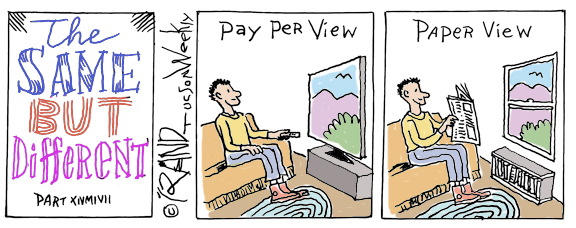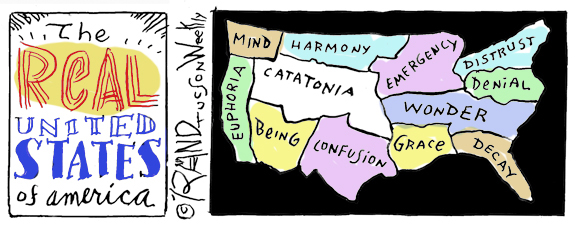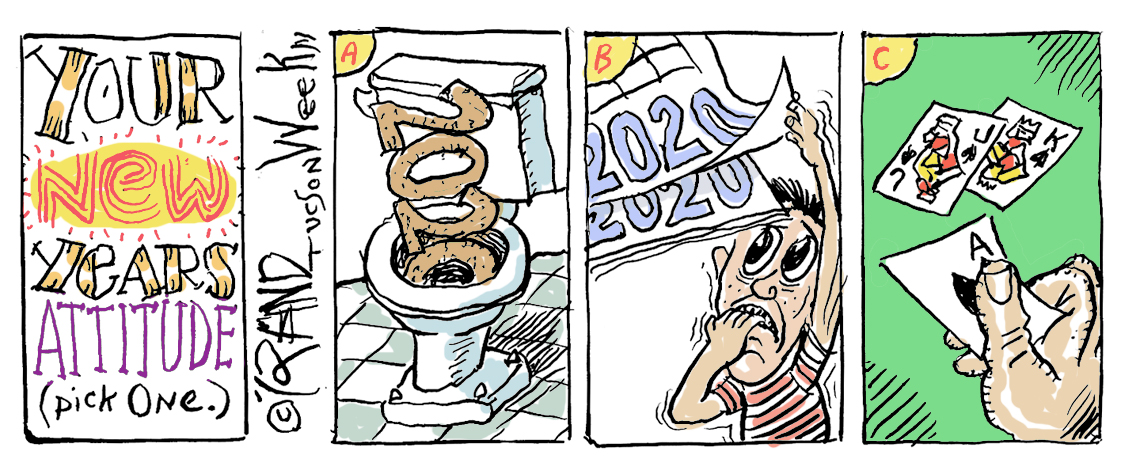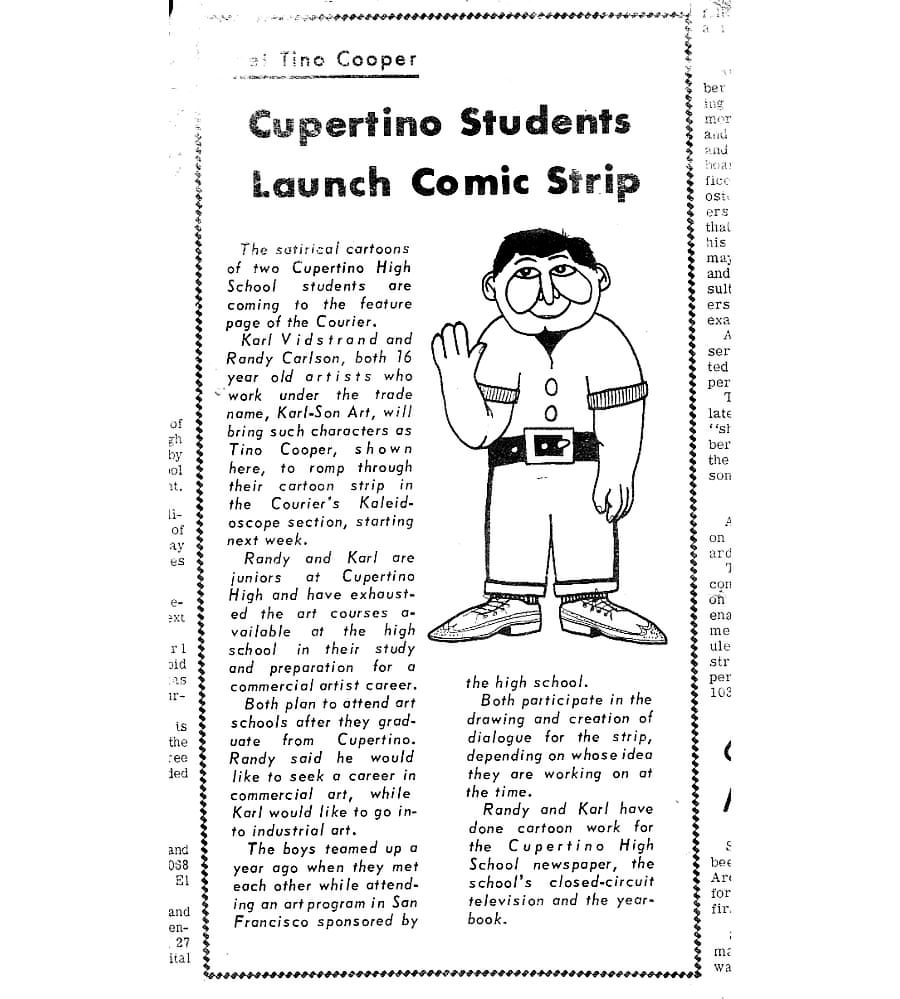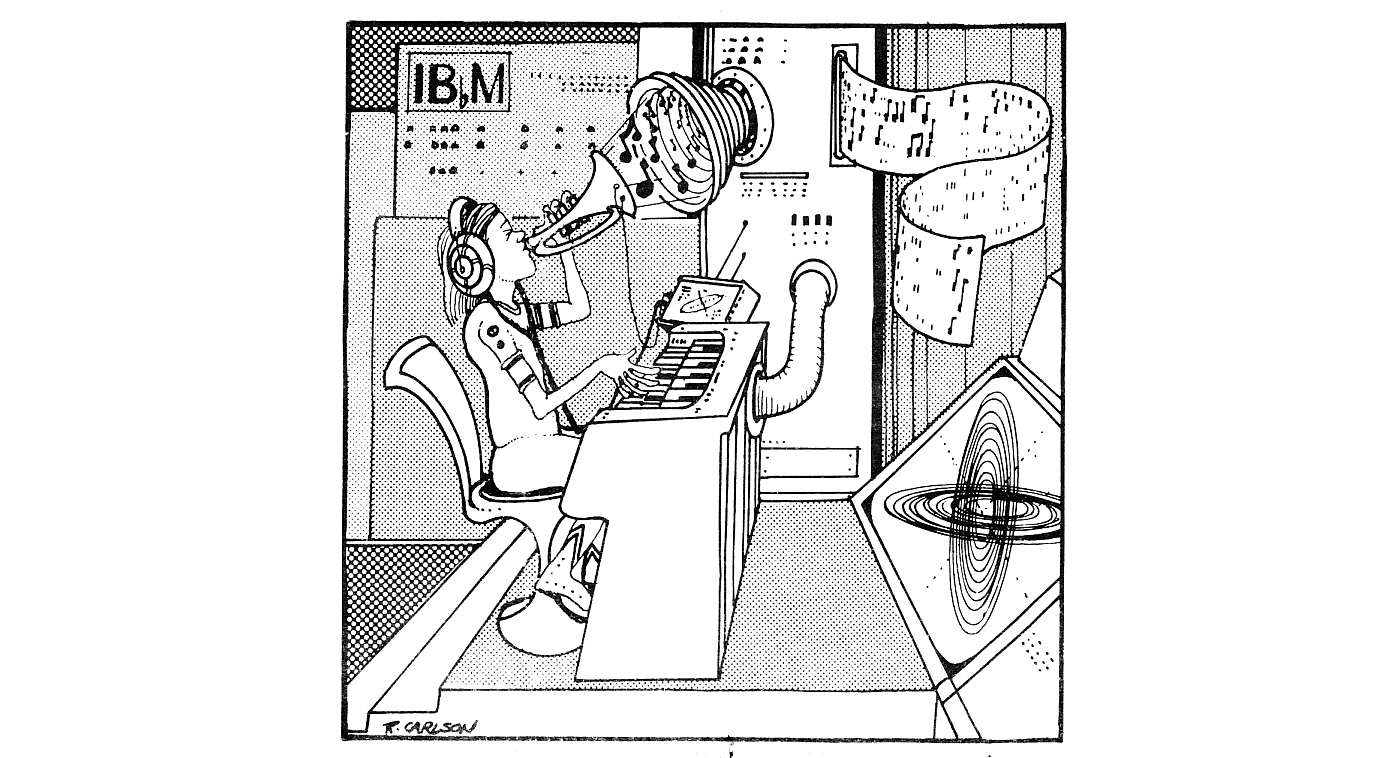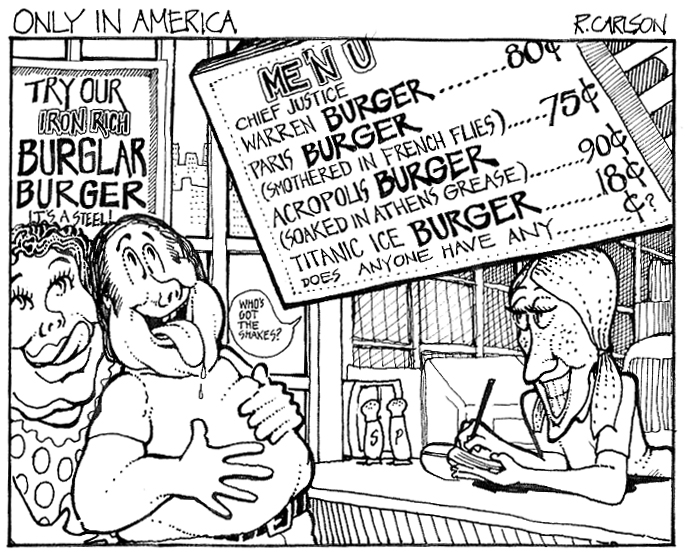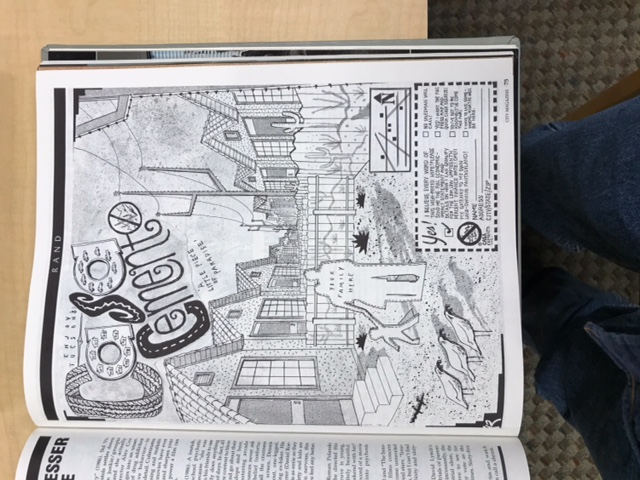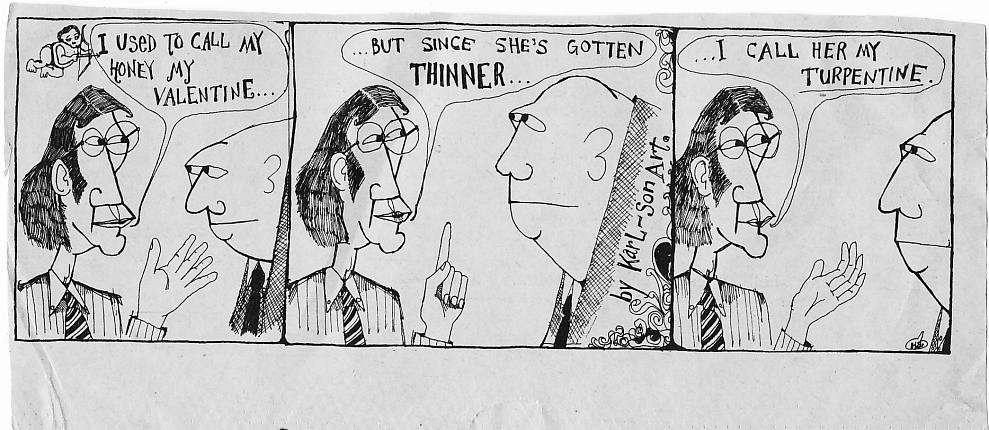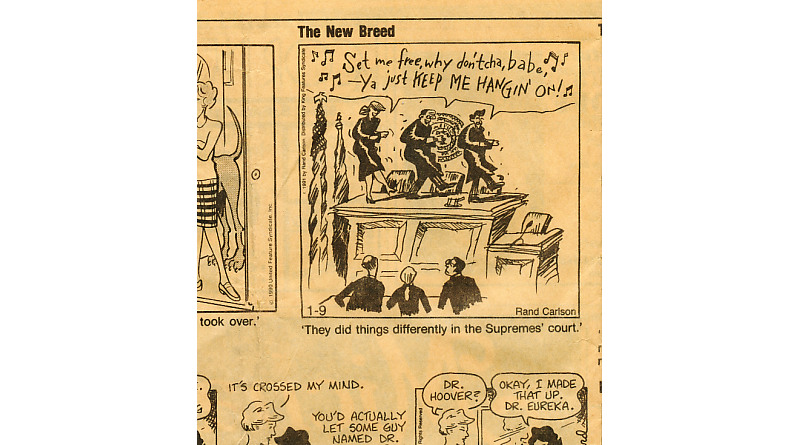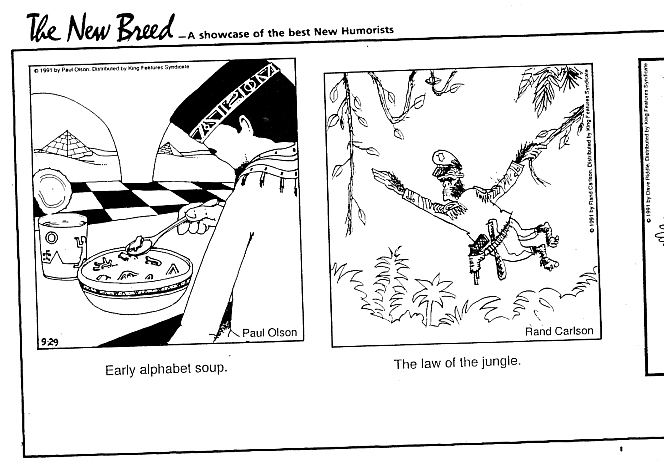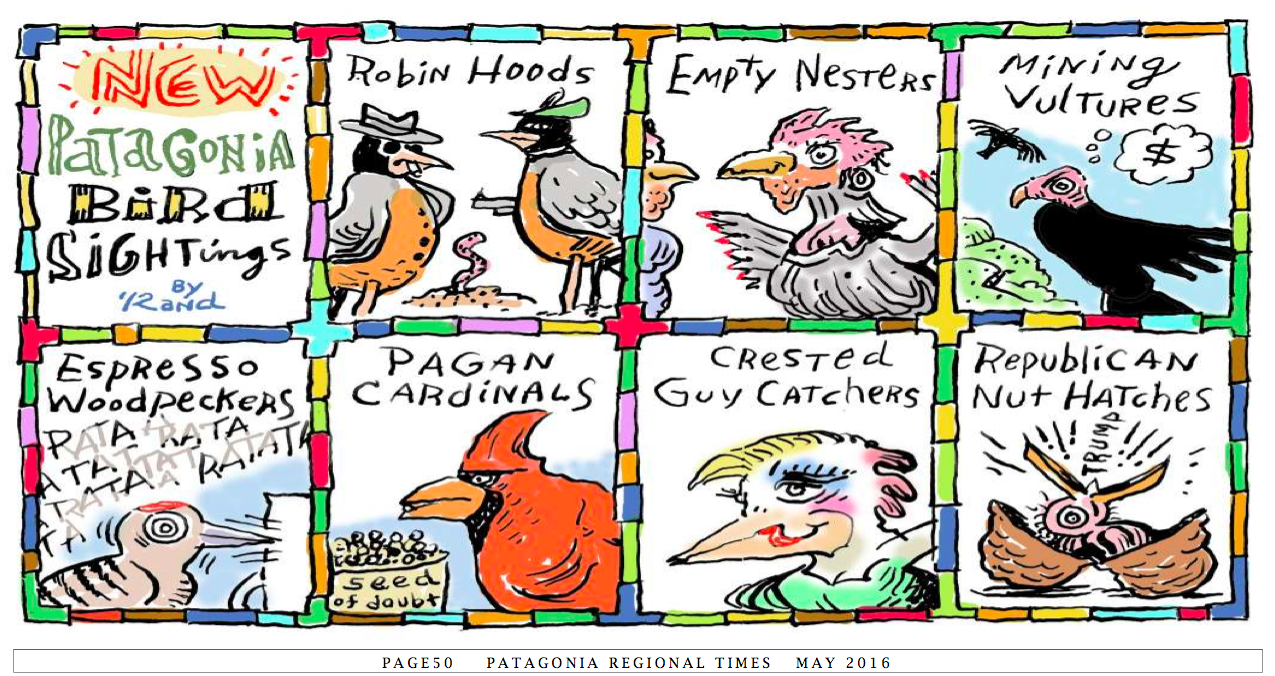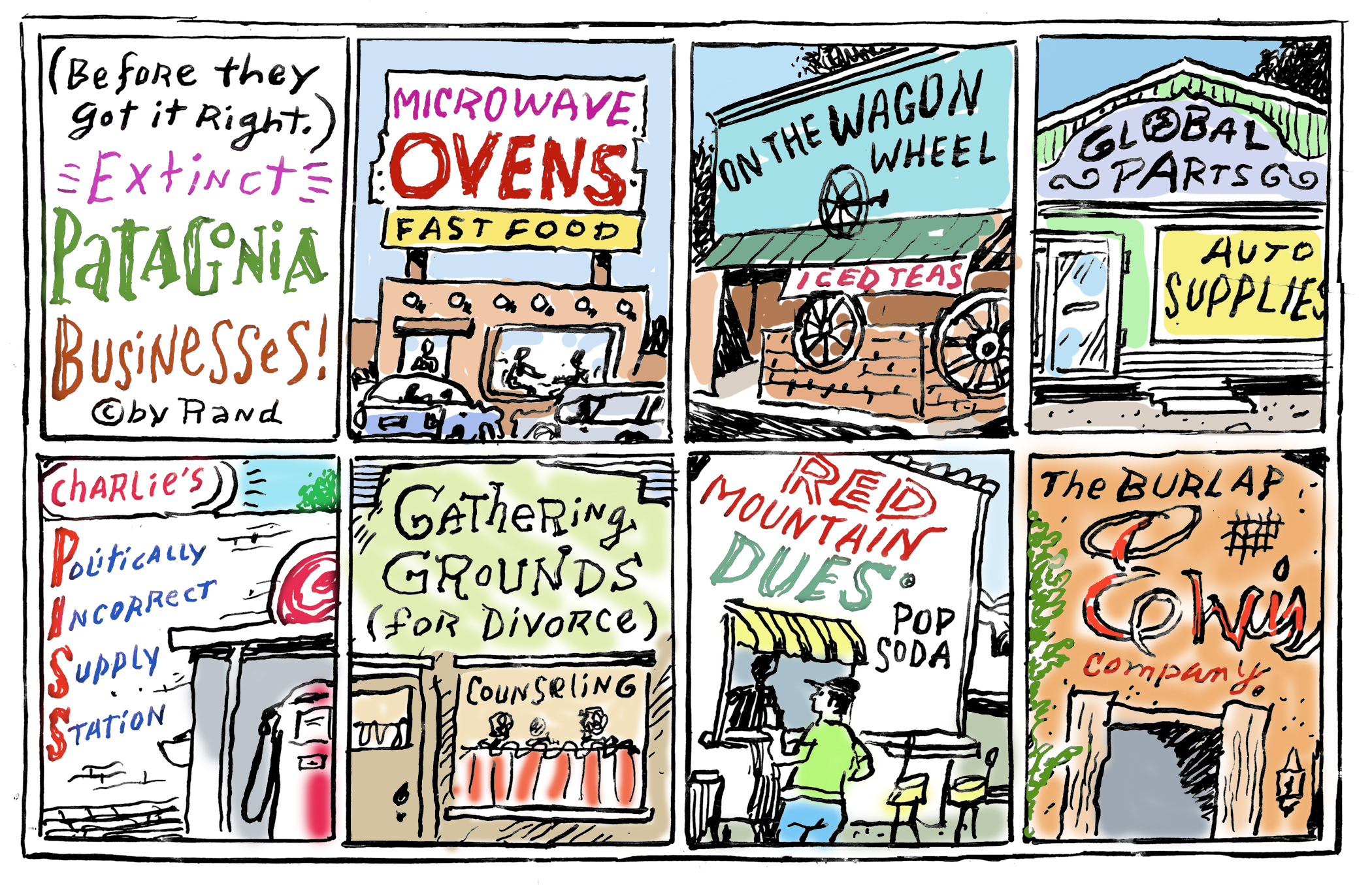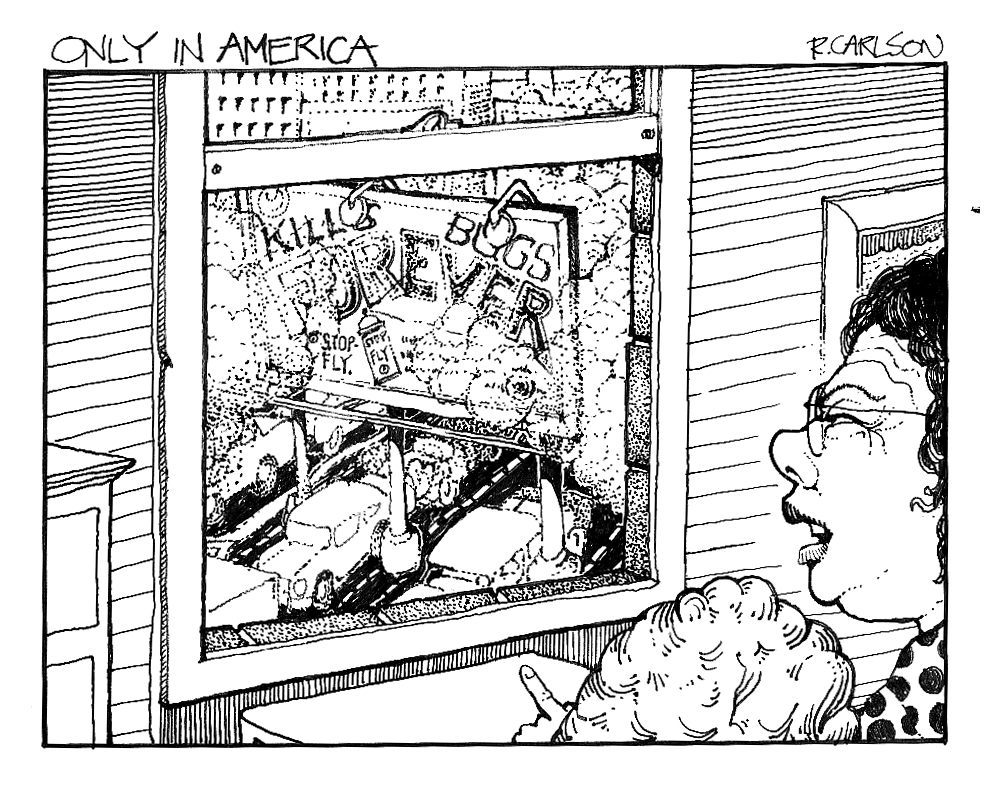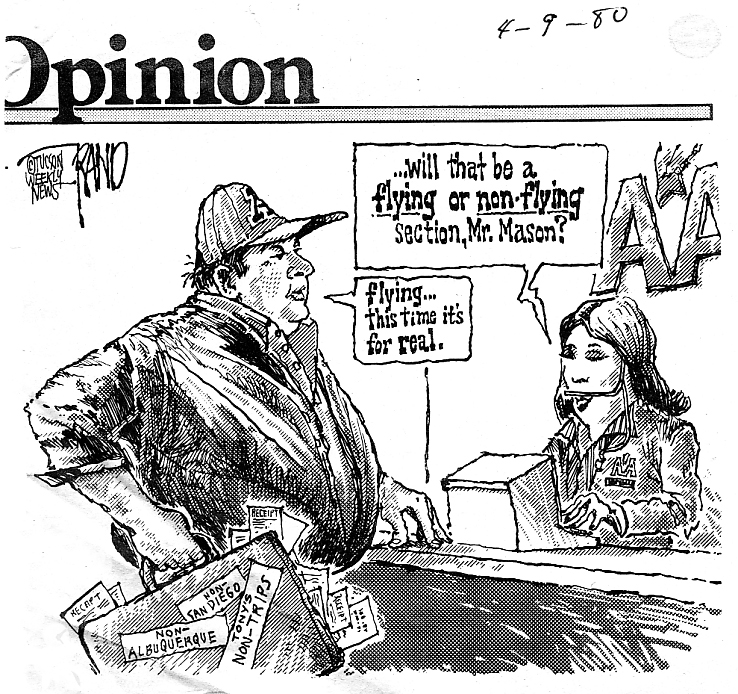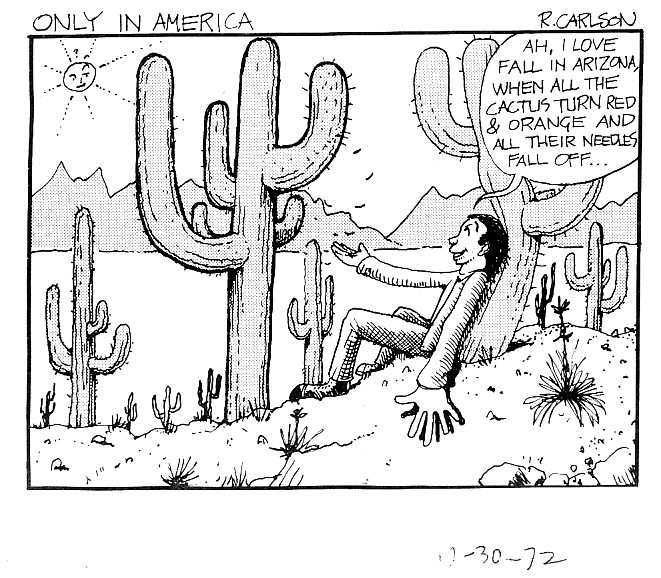Cartooning
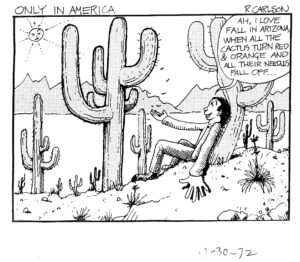 I started cartooning in elementary school. In fifth grade my class was involved in a sister-city exchange with a town in Alaska and I art-directed, so to speak, a mimeographed newsletter that we sent to them – my first publication! It planted a seed. In high school, my friend Karl and I did cartoons for the student newspaper. I did illustrations for the paper as well.
I started cartooning in elementary school. In fifth grade my class was involved in a sister-city exchange with a town in Alaska and I art-directed, so to speak, a mimeographed newsletter that we sent to them – my first publication! It planted a seed. In high school, my friend Karl and I did cartoons for the student newspaper. I did illustrations for the paper as well.
Later, after one year of art school, I became the staff illustrator for the DeAnza College newspaper. One time, Stokely Carmichael (sp) came to speak and he didn’t allow cameras in the hall, so the paper sent me to draw him.
When I came out to Tucson and started at the UA, I worked for the Daily Wildcat all four years doing cartoons and illustrations. I redesigned the paper in 1977. I got paid there, which helped me get through school.
In 1979 I briefly did editorial cartoons for the Arizona Daily Star. Later, in the 80s I got a dialogue going with King Features and they asked me to join a group of cartoonists to fill the hole that opened up when Gary Larson quit. It was called The New Breed. I did that for a couple of years. I once got a royalty check from Sweden from a company that had used one of my images commercially. During those years I was invited to join the National Cartoonists Association and got to join and meet all my heroes.
Also in the late 80s, I was a member of the American Association of Editorial Cartoonists. At that time there were 400 members. Today there are maybe 60 working newspaper cartoonists left.
Bill Plimpton, an artist I admire a lot, was doing the cartoon strip for the Tucson Weekly when he made an animated short that won an award and he quit. At that point I was drawing cartoons for Chuck Bowden at City Magazine. Doug Biggers asked me if I wanted to cartoon for the Weekly, too, and Bowden was cool with it, so I started cartooning for the Weekly with no byline. Later, after City Magazine folded, my byline was attached to Random Shots.
What I’m so grateful for is having a voice all these years – I’ve been continually published. Paper’s going away, but all sorts of digital outlets and arrangements have emerged to fill the void.
